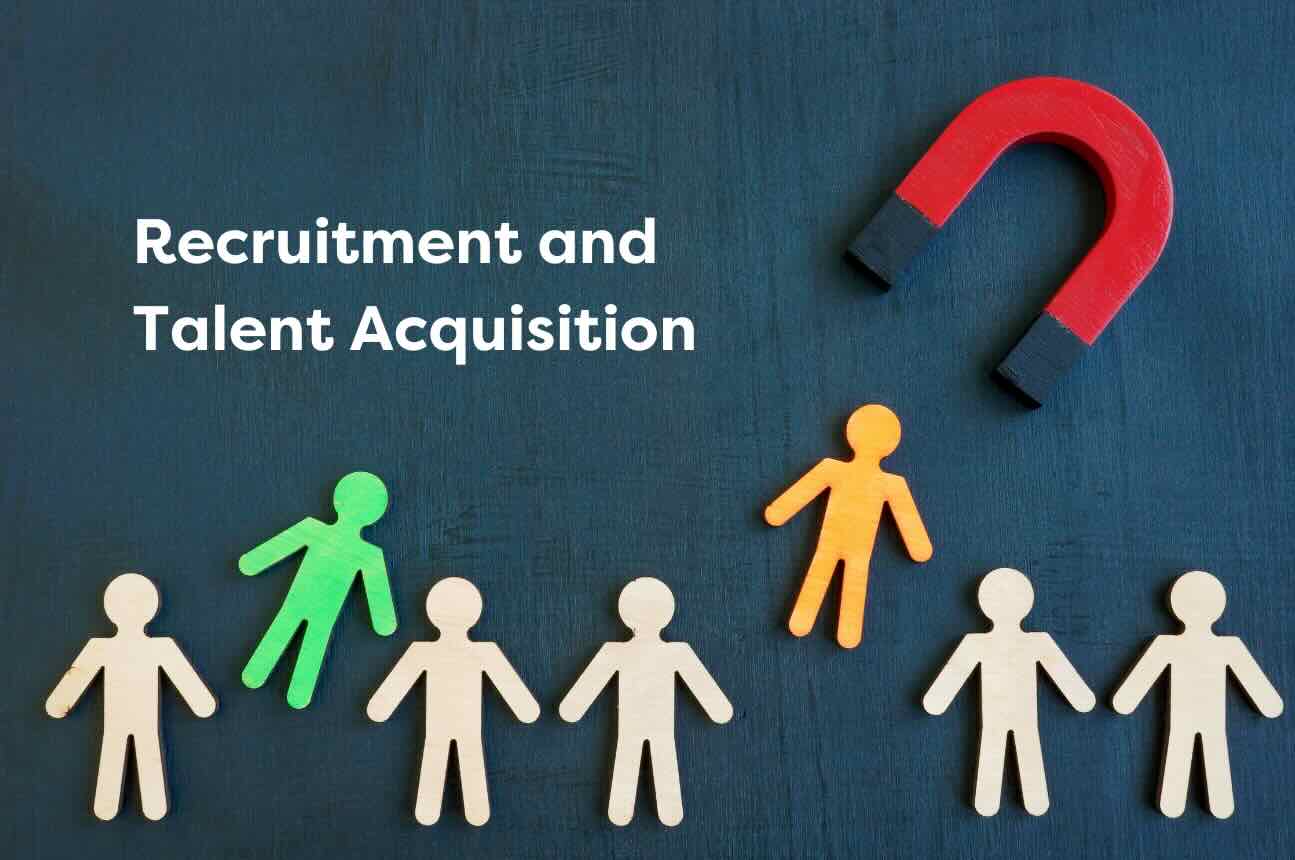What is Talent Acquisition?
Talent acquisition refers to the process of attracting, identifying, assessing, and hiring individuals with the right skills and experience to fill specific roles within an organization. Unlike traditional recruitment, which focuses on filling an immediate vacancy, talent acquisition is more strategic. It involves building a talent pool that aligns with an organization’s future needs, creating a sustainable workforce that supports long-term business goals.
The talent acquisition process typically includes:
- Sourcing candidates
- Attracting top talent
- Screening and interviewing
- Selecting candidates
- Onboarding new hires
This process requires a comprehensive approach, leveraging technology, employer branding, and strong recruitment strategies to identify and secure top talent.
The Importance of Talent Acquisition
-
Attracting the Best Talent The ability to attract and hire the best talent is crucial to the success of any business. By implementing effective talent acquisition strategies, companies can attract high-quality candidates who possess the right skills, experience, and cultural fit to succeed in the organization. A strong talent acquisition process ensures that businesses don’t just hire to fill positions, but bring in employees who will drive growth and innovation.
-
Improving Organizational Performance Hiring the right talent can significantly impact an organization’s overall performance. Skilled and motivated employees are more likely to contribute positively to business goals, improve productivity, and foster a collaborative work environment. In contrast, poor hires can lead to high turnover, low morale, and decreased performance.
-
Supporting Organizational Growth A strategic talent acquisition process allows organizations to proactively plan for future growth. By continually assessing the organization’s evolving needs and recruiting top talent to meet those needs, companies can scale successfully. This is particularly important in dynamic industries where workforce requirements are constantly changing.
-
Enhancing Employer Branding A company’s reputation as an employer is critical in attracting top talent. Organizations with a strong employer brand are more likely to attract high-quality candidates. Talent acquisition teams play a key role in enhancing the company’s image through effective employer branding strategies, providing an exceptional candidate experience, and showcasing the organization’s values and culture.
-
Reducing Turnover Effective https://roman business.com focuses not just on finding candidates with the right skills but also on ensuring a cultural fit within the organization. When employees align with the company’s culture and values, they are more likely to stay long-term. This reduces turnover and the associated costs of rehiring and retraining new employees.
-
Cost-Effective Hiring Though it may seem like an investment, a strong talent acquisition strategy can actually save money in the long term. By making strategic hires, organizations can reduce recruitment costs, lower turnover rates, and minimize the cost of bad hires, which can have a significant impact on an organization’s bottom line.
The Talent Acquisition Process
-
Identifying Hiring Needs The first step in the talent acquisition process is identifying the organization’s hiring needs. This involves understanding the business goals, current workforce capabilities, and any skills gaps that need to be filled. Often, talent acquisition teams work closely with department heads and managers to determine the specific requirements for open positions.
-
Sourcing Candidates Sourcing is the process of identifying potential candidates. This can be done through various channels, including:
- Job boards (LinkedIn, Indeed, Glassdoor)
- Social media platforms (Facebook, Twitter, LinkedIn)
- Recruitment agencies or staffing firms
- Employee referrals or networking
- University partnerships for entry-level talent
Sourcing candidates effectively involves targeting the right channels to find the most qualified talent for the organization. An increasing number of talent acquisition teams are utilizing artificial intelligence (AI) and recruitment software to streamline and enhance sourcing.
-
Attracting Top Talent To attract top talent, organizations need to offer a compelling value proposition. This includes showcasing competitive salaries, career development opportunities, a positive workplace culture, and employee benefits. A well-crafted job description can also help attract the right candidates by clearly outlining responsibilities, qualifications, and growth potential.
Employer branding plays a key role in this step, as candidates are more likely to apply to organizations that have a strong reputation for offering a great work environment, opportunities for growth, and a positive company culture.
-
Screening and Interviewing Candidates Once candidates have applied, the next step is screening and interviewing. Screening often involves reviewing resumes, conducting phone or video interviews, and administering skills assessments. The goal is to evaluate candidates’ experience, qualifications, and cultural fit.
Structured interviews with consistent questions are crucial for ensuring a fair and objective assessment of candidates. Behavioral-based interviewing techniques, where candidates are asked to provide examples of how they’ve handled specific situations in the past, can also be helpful in gauging a candidate’s suitability for a particular role.
-
Selecting Candidates After the interview process, the team evaluates the candidates and selects the one who best meets the role’s requirements and aligns with the organization’s culture. This may involve additional steps such as background checks, reference checks, and possibly a second-round interview with key stakeholders.
It’s important to have a clear selection criteria in place, ensuring that decisions are based on the candidate’s qualifications, experience, and fit for the role and organization.
-
Onboarding New Hires The final step of the talent acquisition process is onboarding. Effective onboarding helps new employees integrate into the organization, understand their role, and feel supported. A strong onboarding process ensures that new hires are set up for success, which leads to higher employee retention and satisfaction.
Strategies for Effective Talent Acquisition
-
Employer Branding and Employee Value Proposition Building a strong employer brand is essential for attracting top talent. Organizations should focus on promoting their culture, values, and benefits through social media, job boards, and company websites. An attractive Employee Value Proposition (EVP) that highlights the unique benefits of working at the organization can make a significant difference in attracting quality candidates.
-
Leveraging Technology and Automation Technology plays an increasingly important role in talent acquisition. Recruitment software, AI-powered tools, and applicant tracking systems (ATS) help streamline and automate much of the hiring process, from sourcing and screening candidates to managing applications. Using these tools allows talent acquisition teams to process more candidates efficiently and make data-driven decisions.
-
Diversity and Inclusion Initiatives Emphasizing diversity and inclusion (D&I) in the hiring process not only fosters a more equitable workplace but also attracts a broader range of talent. Organizations should develop strategies to ensure they are sourcing diverse candidates and providing equal opportunities for all applicants. Diversity in the workplace has been shown to improve creativity, productivity, and overall company performance.
-
Employee Referrals Employee referral programs are a powerful way to source high-quality candidates. Current employees can refer people they believe would be a good fit for the organization, often leading to faster hires with a better cultural fit. Incentivizing employees for successful referrals can increase participation in these programs.
-
Continuous Talent Pool Development Instead of waiting until there is an immediate need, proactive organizations build and maintain a continuous talent pool. This involves cultivating relationships with passive candidates who may not be actively seeking a job but could be a good fit for future openings. Engaging with this pool regularly helps ensure that an organization has a ready supply of qualified candidates when needed.
Challenges in Talent Acquisition
-
Talent Shortages In many industries, there is a shortage of qualified candidates, making it difficult to find the right talent. Companies may need to focus on upskilling current employees, using recruitment agencies, or broadening their search to international candidates.
-
High Competition Many organizations are competing for the same pool of talent, especially in high-demand fields like technology and healthcare. This competition can drive up wages and create challenges in attracting top candidates.
-
Bias in Hiring Unconscious bias during the hiring process can result in the exclusion of qualified candidates based on factors such as gender, race, or age. It is essential for organizations to train hiring managers to minimize bias and ensure a fair and equitable process.
-
Retention of Top Talent Even after successfully acquiring top talent, retaining them is another challenge. Companies must offer career growth opportunities, competitive salaries, and a supportive work environment to keep their best employees.
Conclusion
Talent acquisition is a fundamental aspect of business success, focusing on the strategic identification, recruitment, and retention of the best talent for the organization. It goes beyond merely filling vacancies—it’s about ensuring that the workforce is aligned with the company’s long-term goals and values. By leveraging technology, developing strong employer branding, and using effective recruitment strategies, organizations can build a high-performing team that drives growth, innovation, and success.
In today’s competitive job market, a well-executed talent acquisition strategy is crucial for securing the best candidates and maintaining a strong workforce that will enable the organization to thrive.




